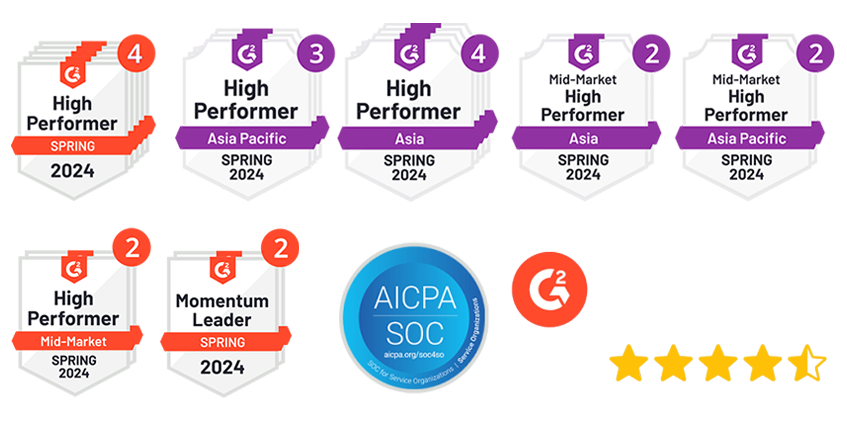In 2027, cross-border payments are expected to exceed $250 trillion, according to the World Economic Forum. As businesses expand globally, the need to manage international payments grows. However, handling cross-border payments can be challenging. High fees, slow transfers, and complex regulations often complicate the process, making it hard for businesses to stay on top.
In this guide, we’ll explain the basics of cross-border payments, explore the different payment methods, and discuss the key benefits and challenges. By the end, you’ll have a clearer understanding of how to make these payments work for you, saving time and money in the process.
What Are Cross-Border Payments?
Cross-border payments are transactions where money is transferred between individuals or businesses in different countries. These payments can be for a variety of reasons: purchasing goods, paying for services, or sending money between branches of the same company. Because these payments involve different currencies and financial systems, they often require extra steps compared to domestic payments.
Example: Let’s say a company in the United States wants to pay a supplier in Germany for raw materials. The U.S. company sends the payment to a bank, which then transfers the funds to the supplier’s bank in Germany. The supplier receives the payment in euros, and the U.S. company pays in dollars.
This type of transaction, where the payer and payee are in different countries and currencies are involved, is what we call a cross-border payment. Let’s now take a look at the different ways these payments can be made.
Types of Cross-Border Payments
There are several ways to make cross-border payments, each with its benefits and challenges. The method you choose will depend on factors like speed, cost, and the countries involved. Here are the most common types:
1. Wire Transfers
Wire transfers are one of the most traditional ways to send money internationally. Banks or money transfer services handle the transaction, sending funds from one bank to another. They are generally secure but can take a few days to process and often come with high fees.
Example: If a business in the U.S. needs to pay a supplier in Japan, it can initiate a wire transfer through its bank. The funds will be transferred from the U.S. bank to the supplier’s bank in Japan, where it’s converted into yen.
2. Credit/Debit Card Payments
Credit and debit cards are commonly used for cross-border payments, especially for smaller transactions. These payments are processed through global networks like Visa or MasterCard, and they’re usually faster than wire transfers. However, international card payments often come with extra fees and exchange rate costs.
Example: A customer in Canada purchasing a product from an online store in the UK might use their credit card to make the payment. The transaction will be processed through Visa or MasterCard, with the payment converted to British pounds.
3. Online Payment Platforms
Several platforms make it easier and cheaper to send cross-border payments. These platforms often offer lower fees and faster transfer times than traditional banks. They allow individuals and businesses to send money directly through their accounts, often without the need for a bank intermediary.
Example: A freelancer in India might use PayPal to receive payment for services provided to a company in the U.S. The payment is made in U.S. dollars, and PayPal converts it to Indian rupees before depositing it into the freelancer’s local bank account.
4. Foreign Exchange Services
These services specialize in currency exchange, making them useful when dealing with cross-border payments that involve currency conversion. Businesses often use these services to get better exchange rates and lower fees than those offered by traditional banks.
Example: A business in the UK buying inventory from a supplier in Brazil might use a foreign exchange service to handle the payment. The service will convert pounds to Brazilian reais, often at a better rate than a bank would offer.
Now that you’re familiar with the different types of cross-border payments, choosing the right one depends on the specific needs of your business, but it’s also important to understand how they can actually benefit your business.
Benefits of Cross-Border Payments
Cross-border payments bring several key benefits that help businesses grow and manage their international transactions more effectively. Whether you’re paying a supplier or receiving payments from customers, understanding these benefits can improve your overall business operations.
1. Reach New Markets
With cross-border payments, businesses can easily enter new markets and sell to customers across the globe. This opens up opportunities to grow your customer base and increase revenue, allowing your business to thrive internationally.
2. Keeps Cash Flow Consistent
Managing cash flow is important for any business. Cross-border payments help businesses get paid on time and pay their suppliers without delays. This keeps the money flowing smoothly and helps you stay financially stable.
3. Quick Transactions
With modern payment methods, cross-border payments can happen quickly, sometimes in a matter of hours. This speed helps businesses keep operations running smoothly, from paying bills to receiving payments from customers.
4. Lower Fees for Currency Exchange
When money needs to be changed from one currency to another, businesses often pay extra fees. With the right services for cross-border payments, these fees can be much lower. That means you keep more of your money, even when trading internationally.
5. More Payment Options for Customers
Offering a variety of ways to pay makes it easier for customers to buy from you. Whether it’s by credit card, bank transfer, or an online platform, cross-border payments give you the flexibility to serve more customers around the world.
6. Build Stronger Relationships
When payments are smooth and reliable, it builds trust with customers and partners. Cross-border payments help strengthen relationships, making it easier to work together in the long term.
While cross-border payments offer many benefits, they also come with their share of challenges. Businesses often struggle with high fees, slow processing times, and complex regulations when making international payments. Let’s understand these issues and how they can impact your business.
Challenges of Cross-Border Payments
Cross-border payments have many challenges that can make international transactions difficult. These issues can lead to higher costs, delays, and added frustration for businesses. Here are some of the most common issues businesses face:
1. High Fees and Extra Costs
One of the biggest problems with cross-border payments is the high fees. According to the World Bank, the average fee for sending money internationally is around 6.65%. This means businesses lose money to conversion fees, service charges, and other hidden costs. These fees can add up, especially if businesses make regular international payments.
2. Slow Processing Times
International payments can take a long time to process. Unlike local payments, which are often quick, cross-border payments can take several days. This is because the money passes through different banks and systems. As a result, businesses may face delays that can impact cash flow and cause frustration.
3. Currency Exchange Problems
When payments involve different currencies, businesses need to convert money. Exchange rates change constantly, making it hard to know exactly how much you will pay or receive. Additionally, banks and payment processors charge extra fees for currency conversion, which can make payments more expensive.
4. Regulatory and Legal Issues
Different countries have different rules about payments. Cross-border payments must follow local laws and regulations, like anti-money laundering (AML) and know-your-customer (KYC) checks. These regulations can delay payments, especially if a business doesn’t understand or follow the rules. Failing to comply with local laws can also result in penalties or fines.
5. Fraud and Security Risks
Cross-border payments are at a higher risk of fraud because they go through many different systems. Fraudsters may try to steal money or information through methods like phishing or identity theft. Businesses need to make sure they use secure systems to protect themselves from these threats.
6. Limited Payment Options
Not all countries or businesses use the same payment methods. Some countries have older systems, while others might prefer a specific way of paying. This can make it harder for businesses to collect or make payments on time. It also creates problems if the payment method isn’t available in the other country.
These challenges show how cross-border payments can be complicated and costly. However, understanding these problems will help businesses find ways to handle them better and keep their payments on track.
How Peakflo Can Help with Cross-Border Payments
Managing cross-border payments can be a headache for finance teams—dealing with high fees, currency fluctuations, and slow transactions can strain cash flow and operations. Peakflo’s End-To-End Payment Automation simplifies this process, making it seamless to both pay international vendors and get paid by international customers efficiently.
1. Paying International Vendors
With Peakflo, finance teams can automate vendor payments across multiple currencies and countries. Key benefits include:
- Multi-Currency Payments – Pay vendors in their local currency while maintaining clarity in your books.
- Approval Workflows – Ensure compliance with built-in approval flows before initiating payments.
- Real-Time Tracking – Monitor payment status across borders, eliminating manual follow-ups.
2. Getting Paid by International Customers
Peakflo also helps businesses receive payments from customers worldwide without the usual friction:
- Multi-Currency Invoicing – Generate invoices in the customer’s preferred currency.
- Local Payment Options – Offer international customers localized payment methods for faster transactions.
- Automated Reconciliation – Match incoming payments to invoices in real-time, reducing errors and manual work.
3. Works with Your Accounting Systems
Peakflo works well with the accounting software you already use. This means you can keep track of your cross-border payments alongside your regular transactions without any extra work. It saves you time and reduces errors.
Peakflo makes managing cross-border payments simple. With fast payment tracking and secure transactions, it helps your business grow without the stress of dealing with international payments.
Conclusion
Handling cross-border payments can be tough. High fees, slow processing times, and complicated regulations often make international transactions a challenge. Businesses need a solution that is simple, fast, and affordable.
Peakflo makes this possible. It speeds up payments, offers better currency rates, and keeps transactions secure. With Peakflo, you can easily track payments, manage invoices, and improve cash flow. Say goodbye to payment issues and take control of your cross-border payments. Start using Peakflo today to make international payments easier and more efficient.










![Why AI Sales Calls Are Making Good Sales Reps Even Better [2025 Guide] ai sales calls](https://blog.peakflo.co/wp-content/uploads/2025/09/65168cf6-3001-4733-8cbc-12d5684cf449-218x150.webp)


































